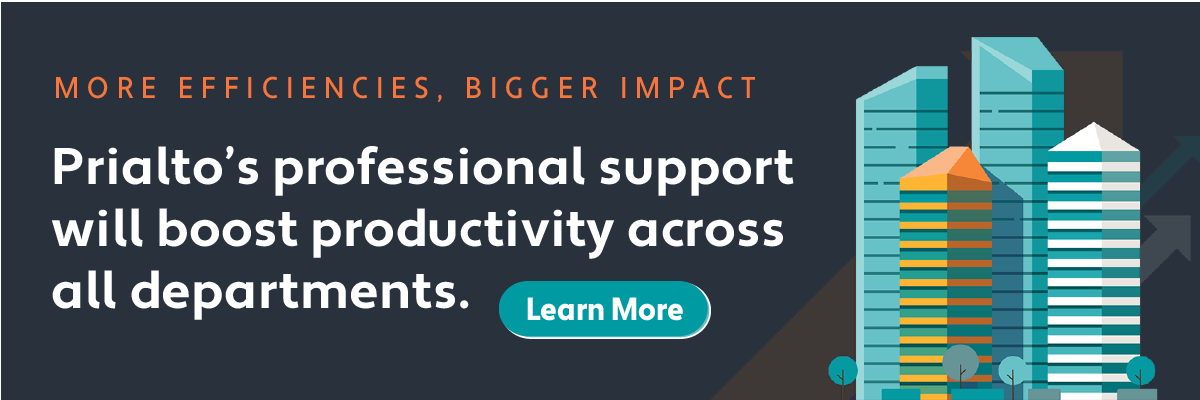What is Workplace Productivity
Traditionally defined, Workplace productivity is the total output of goods and services versus the total input of labor and costs. A simple calculation is to divide the number of goods or services you produce by the aggregate hours of labor required to deliver those goods. While labor is not the only cost involved in producing products, it is the primary measure of workforce productivity.
For most businesses, the goal is to produce more goods and services more quickly, lowering labor costs and improving the bottom line. However, productivity is not solely about speed. You can manufacture more products per hour or day, but if the products are defective and need rework or if customers reject them, you have not truly increased productivity.
How to Improve Workplace Productivity
There are all kinds of tips and tricks available to improve individual productivity. You can check out systems like:
These systems help you personally work more efficiently—get more done in less time.
Organizational productivity is different. How do you make your entire business productive?
1. Improve Workplace Productivity with Time Tracking Software
We all know that you cannot manage what you do not measure. Until you understand how your teams allocate their time, you cannot optimize their efforts. Studies estimate that U.S. companies lose $8.8 billion per day due to untracked time—because they do not know where the waste occurs. That is a significant amount of money.
Time tracking platforms like Time Doctor, Toggl, and Rescue Time automate time tracking by tracking activity on apps, taking screenshots, and monitoring keyboard and mouse activity. You get reports that show how people spend their time.
You can use a time tracking platform as a carrot and a stick—reward improvements in efficiency and offer corrective measures for slowdowns or distractions. Time trackers also help with resource planning for future projects as you can more accurately track the time tasks will take.
As a bonus, time tracking software can link to billing and payroll systems for more efficient invoicing and payment.
2. Improve Workplace Productivity with a Recognition Program
Employees who receive one piece of praise per day are 30 percent more productive, and 90 percent of workers say they work harder when they receive positive recognition. Companywide recognition programs formalize processes for nominating and awarding employees.
Some companies have online nomination forms that any employee can access to request a monetary award, a certificate of appreciation, a shoutout at a team meeting, or some other gift. Personalized appreciation gifts for your team can demonstrate the value of employees and motivate them to do their best work. The prize doesn't have to be for productivity. That said, recognition for productivity can double the impact on workplace efficiency.
Recognition from supervisors is what most employees seek, but do not disregard the significance of peer-to-peer recognition and awards. Companies with peer recognition programs experience 36 percent better financial performance than those with manager-only programs. This is because peer-to-peer recognition fosters collaboration among teammates as well as cross-functional teamwork. People are less guarded about their work when acknowledged by colleagues.
3. Improve Workplace Productivity with a Structured Learning Program
From tuition assistance to on-the-job skill building, companies with learning programs have happier, more loyal, more productive workers. Companywide structured learning programs are even more powerful. Technology changes so fast that workers need to learn new skills continually.
- Online education platform Udemy found that more than half of highly productive companies have employees who spend 31–50 hours learning per year.
Nothing kills productivity faster than outdated skills. Structured learning is different from adopting a gamified learning management system that employees can use at their discretion. Structured learning programs assess the skills a company has and the skills it needs and generate individualized and group learning "journeys" for employees and teams aligned with business needs and goals. Every employee has a roadmap for continuing to learn the skills they will need. Structured learning solutions like Learn In build roadmaps for businesses and measure progress and impacts.
- LinkedIn's Learning Report found that 95 percent of employees would remain with a company that invests in helping them learn.
Another productivity killer is employee turnover. It takes an average of 42 days to fill a vacant position—that is 42 days of lost productivity, plus the time to ramp up a new employee to the previous worker's productivity level. Companies with proactive learning programs retain their workers.
4. Improve Workplace Productivity by Surveying Employees
The events of 2020 have brought so many unprecedented changes to work and life that asking questions and listening to answers is imperative. Companies that ask for feedback from employees and act on that feedback are more productive.
- 63 percent of employees at businesses that ask for feedback are highly productive.
- 27 percent of employees that do not ask for employee feedback are highly productive.
There you have it. But it is not enough to ask for feedback. You must respond to the input with meaningful changes. Just 18 percent of employees believe that managers will act on survey results. "For employees to trust that the [time] they take out of their day to respond to a survey is worthwhile, the Society for Human Resources Management (SHRM) said, "they need to see managers sharing the survey responses with their team in a constructive way."
Employee feedback also boosts retention and recruiting. According to a Harvard Business Review article, "Want fewer employees to quit? Listen to them," a survey of 27,000 employees found that:
- 62 percent of employees at companies that repeatedly ask for feedback recommend their company to others.
- 5 percent of employees at companies that do not repeatedly ask for feedback recommend their company to others.
5. Improve Workplace Productivity with a Continuous Improvement Program
As mentioned above, improving your business's productivity means improving the speed and quality of production or service delivery. Continuous improvement programs aim at both these goals. With its roots in manufacturing, continuous improvement is a methodology that identifies opportunities for increasing efficiency, quality, and customer satisfaction.
Several continuous improvement programs trace their roots to Japan's Toyota manufacturing system known as Kaizen. The steps of Kaizen are:
- Identify a problem or opportunity
- Analyze the process
- Develop an optimal solution
- Implement the solution
- Study the results and adjust
- Standardize the solution
Other continuous improvement programs include Six Sigma, Lean, and PDCA (Plan Do Change ACT). According to benchmark data of improvements implemented by Kainexus:
- 10 percent of gains save money
- 25 percent of gains save time
- 80 percent of improvement ideas come from front-line workers
Improving Workplace Productivity
Improving workplace productivity requires a companywide approach to your workforce, business processes, and service delivery. Each of the methods of improving productivity mentioned here has proven ROI. Not all of them are right for every business or every type of business. Remember that the goal is not to implement productivity plans but to improve output per employee per hour/day.
About the Author: Bill is Prialto's senior content marketing manager and writes about the future of work and how businesses can be more productive and successful. His work has appeared in the World Economic Forum Agenda blog and CIO magazine.

